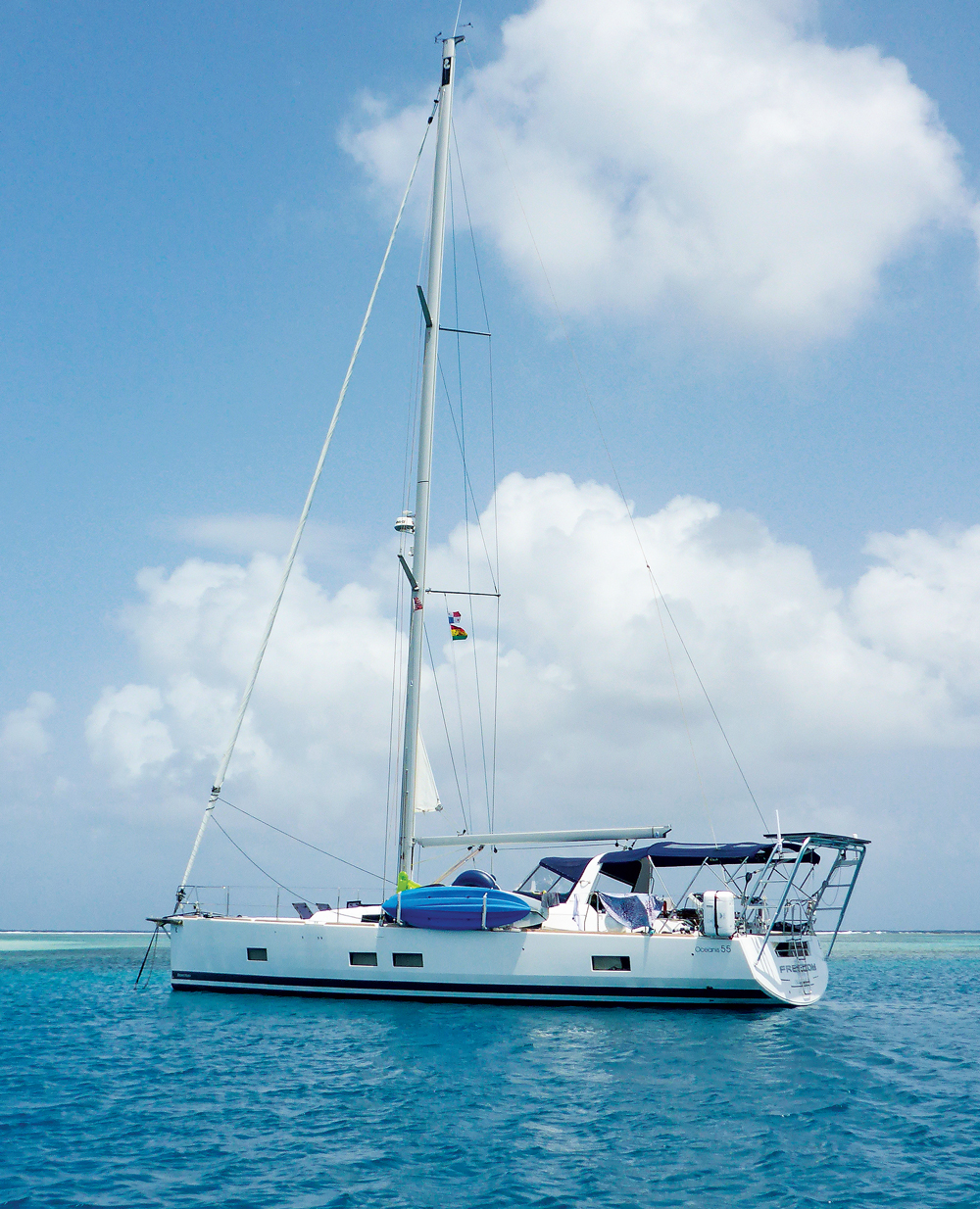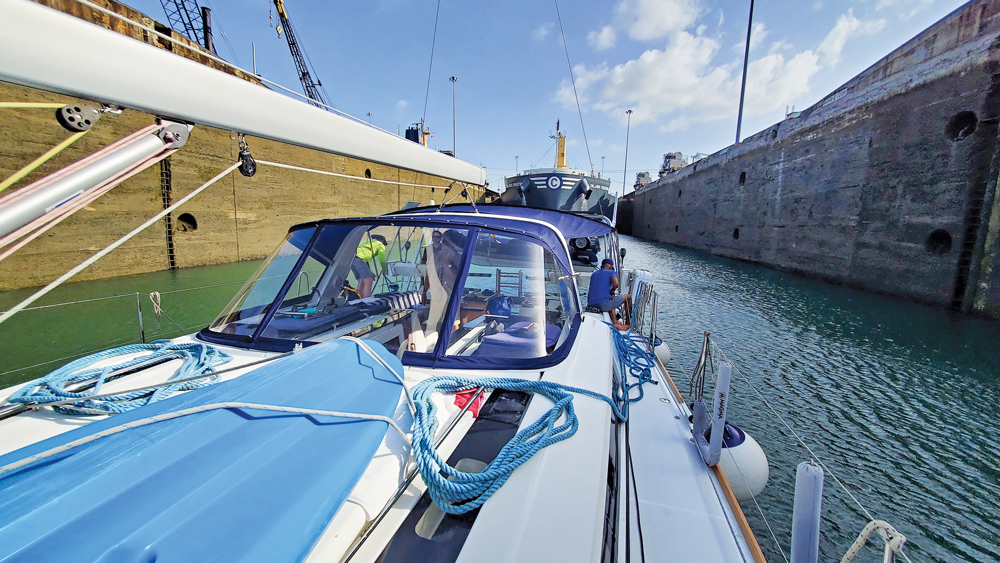Through the big ditch
The ups and downs of a transit through the Panama Canal goes smoothly with the Panama Posse
Within the looming walls of the first lock, line handlers on either side tossed monkey fists down at our bow with force and accuracy. We ran two of the lines to the stern, so we had lines on both port and starboard, fore and aft. We tied each monkey fist to the large eye at the end of the thick dock lines and the workers then hauled them up and looped them around the bollards.

David, a skilled captain who is typically jovial, watched in consternation as a large cargo ship pulled closer and closer astern. The canal chambers are 110-feet long and 40-feet wide. Freedom’s beam is 16 feet, 7 inches. The behemoth behind was some 600 feet long and wedged in with just inches between its hull and the walls.
Once the lines were secured, it was up to us to take in the slack as the gates closed, unseen valves opened, and millions of gallons of water swirled in. It took about eight minutes for the water to rise as we kept Freedom snug and centered in the channel. We repeated this process several times as we advanced through the canal, each time getting swifter, more assured, and finally having fun with it.
At the Pedro Miguel Lock, Ivan deemed it breakfast time. It is part of the agreement that any hired hands must be fed, and with good grub too. So Sheri switched hats and miraculously served up a generous breakfast of bacon, eggs and freshly made cinnamon rolls.
Progressing through the locks we side-tied to a tug temporarily while the ship in front of us got in position, later we would be precariously moored along the canal wall for a brief while, with the entire length of Freedom lined with fenders. Seeing the scarred and potholed walls of the canal up close, it was hard not to think of the dramatic history.
A canal across the isthmus was first envisioned in 1534 by a French Emperor and the idea was later revisited by the Spanish and U.S. An attempt at constructing a canal by French enterprises in the late 1800s was defeated by weather and geography, with scores of workers perishing from disease. Finally the canal was engineered and opened in 1914, 10 years after the U.S. stepped in. To transit the canal today is to recognize the tens of thousands who died in its making.

Meandering through the Culebra Cut, an eight-mile channel through a lush forest, we entered Lake Gatún. The simplicity of the canal is brilliant. A series of dams in the bountiful rivers create and control water levels in the manmade lakes. Lake Gatún holds all the water needed for the operation of the locks, thanks to an abundant 80-plus inches of rainfall each year. The original mechanics and gates remain, nearly 110 years after it first opened. It truly is a masterpiece of human engineering, coexisting with nature. The jungle that lines the waterways is protected and Guti frequently pointed out wildlife along the shore, including deer and crocodiles.
Ivan and Guti spent much of their time watching video games and soap operas when we were not maneuvering, until once again it was mealtime and Sheri ducked below deck to serve up a hearty lunch of chili verde.
The wind had picked up as we plowed through 20 miles of Lake Gatún. The murky water was streaked with white and we were full throttle trying to keep up with the ship on our bow, which would be our lock-mate. We didn’t want them to go without us, and risk having to spend the night in the lake.

Comments